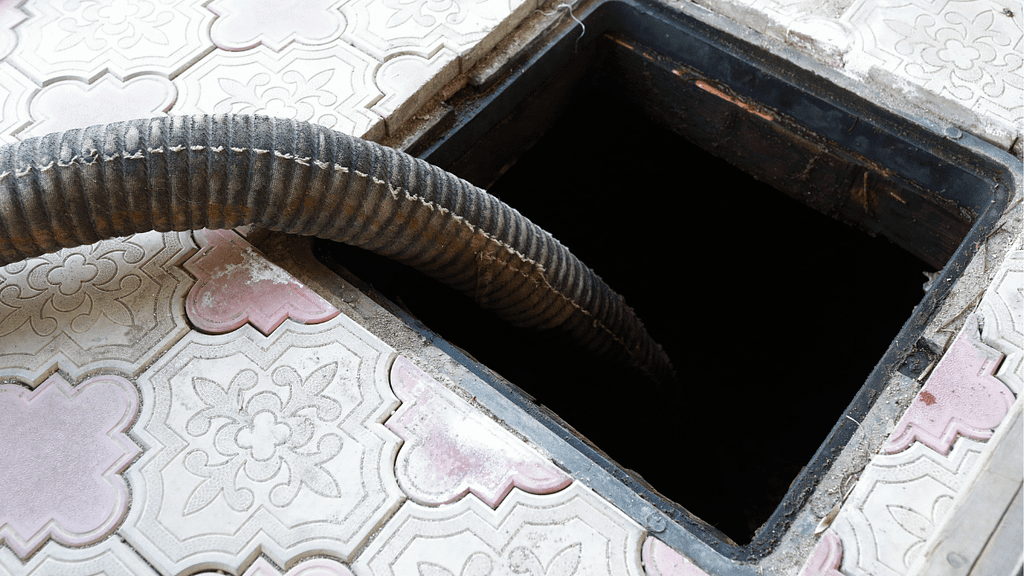Maintaining a septic system might not be the most glamorous topic, but it’s certainly one of the most crucial aspects of homeownership, especially for those living in rural or suburban areas. Septic systems quietly perform a vital function, managing household wastewater in areas where municipal sewage systems are unavailable or impractical. In this guide, we’ll delve into the basics of septic systems, how they work, and why regular maintenance is essential for their longevity and your peace of mind.
What is a Septic System?
A septic system is an underground wastewater treatment structure commonly used in areas without centralized sewer systems. It consists of three main components:
- Septic Tank: This is a large, watertight container buried underground, usually made of concrete, fiberglass, or polyethylene. It receives wastewater from the house and separates solids from liquids. Bacteria inside the tank break down organic matter, converting it into sludge and scum.
- Distribution Box (if applicable): In some systems, particularly those with multiple drainage lines, a distribution box evenly distributes wastewater from the septic tank to the drain field.
- Drain Field (also known as leach field or absorption field): This is a network of perforated pipes buried in trenches filled with gravel or other porous material. The pipes distribute the liquid effluent from the septic tank into the soil, where it undergoes further treatment and filtration before returning to the groundwater.
How Does a Septic System Work?
The functioning of a septic system is a natural process that relies on gravity and microbial activity. Here’s a simplified breakdown of its operation:
- Wastewater Collection: Wastewater from toilets, sinks, showers, and laundry drains flows into the septic tank via underground pipes.
- Separation: Inside the septic tank, solids heavier than water settle at the bottom, forming a layer of sludge, while lighter substances like oil and grease float to the top, creating a layer of scum. Meanwhile, the liquid effluent stays in the middle.
- Biological Treatment: Bacteria naturally present in the tank break down the organic matter in the liquid effluent, reducing its strength and purifying it.
- Effluent Disposal: The clarified liquid effluent exits the septic tank and enters the drain field, where it percolates through the soil. Soil organisms and filtration processes further treat the effluent, removing harmful pathogens and pollutants.
Importance of Regular Maintenance
While septic systems are designed to be self-sufficient, they still require periodic maintenance to function properly and prevent costly problems. Here’s why regular maintenance is crucial:
- Prevent System Failures: Neglected septic systems are prone to clogging, backups, and malfunctions, leading to sewage backups, foul odors, and potential health hazards.
- Extend Lifespan: Routine maintenance, including regular inspections, pumping of the septic tank, and repairs as needed, can significantly prolong the lifespan of the system, saving homeowners from the expense of premature replacement.
- Protect the Environment and Public Health: A malfunctioning septic system can contaminate groundwater and surface water with bacteria, viruses, and other pollutants, posing risks to human health and the environment.
- Preserve Property Value: A well-maintained septic system is essential for preserving property value and ensuring a smooth sale if you decide to put your home on the market.
Maintenance Tips for Septic Systems
To keep your septic system in optimal condition, consider these maintenance tips:
- Regular Pumping: Schedule professional septic tank pumping every 3 to 5 years, depending on household size and usage.
- Minimize Water Usage: Be mindful of water consumption to avoid overloading the septic system. Fix leaks promptly, use water-efficient appliances, and spread out laundry and dishwasher loads.
- Avoid Flushing Harmful Substances: Refrain from flushing non-biodegradable items, grease, oil, chemicals, medications, and excessive amounts of household cleaners down the drain.
- Landscaping Considerations: Avoid planting trees or shrubs near the septic system to prevent root intrusion into pipes or the tank.
- Regular Inspections: Schedule professional inspections of your septic system at least once every 3 years to detect potential issues early.
In conclusion, understanding how septic systems work and the importance of regular maintenance is essential for every homeowner with a septic system. By implementing proper care and maintenance practices, you can ensure the longevity and efficiency of your septic system while safeguarding the environment and public health.
Remember, when it comes to septic systems, an ounce of prevention is worth a pound of cure. So, prioritize proactive maintenance to avoid costly repairs and enjoy peace of mind knowing that your wastewater management system is operating smoothly.
